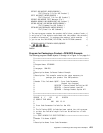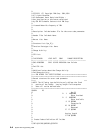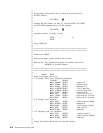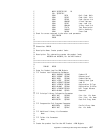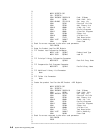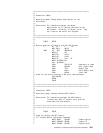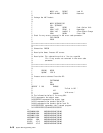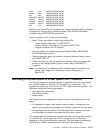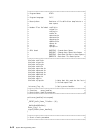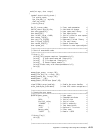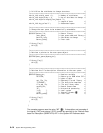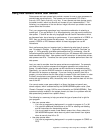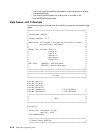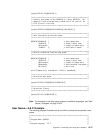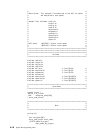
ABCPF ᑍFILE 2924ABCABCV3R1M
ABCMSG ᑍMSGF 2924ABCABCV3R1M
ABC ᑍCMD 2924ABCABCV3R1M
ABCPNLGRP ᑍPNLGRP 2924ABCABCV3R1M
ABC5 ᑍPRDDFN 51ABCABCV3R1M
ABC5 ᑍPRDLOD 51ABCABCV3R1M
ABC29 ᑍPRDLOD 2924ABCABCV3R1M
ABC ᑍLIB 51ABCABCV3R1M
Before you can build PTFs for the product, you need to save the product and install
the product by using the Save Licensed Program (SAVLICPGM) and Restore
Licensed Program (RSTLICPGM) commands.
Once the product is built, you can do the following:
Build PTFs for the product by using the following APIs:
– Create Program Temporary Fix (QPZCRTFX)
– Retrieve Program Temporary Fix Information (QPZRTVFX)
– Program Temporary Fix Exit Program
Use save, restore, or delete license program (SAVLICPGM, RSTLICPGM,
DLTLICPGM) commands on it.
Retrieve information about the product by using the Retrieve Product Informa-
tion (QSZRTVPR) API.
Check the product to verify the existence of libraries, folders, and objects that
are part of the specified product (Check Product Option (CHKPRDOPT)
command).
Note: For examples of the software product example program in additional lan-
guages, see “Program for Packaging a Product—Examples” on
page B-129.
Retrieving a File Description to a User Space—ILE C Example
The following programming example shows an application that uses a user space
as a receiver variable by retrieving a file description to a user space. This
approach is possible only if you use an HLL that is able to work with pointers. The
application accepts the following parameters:
User space name and library
File name and library
Record format
The following shows the sequence of steps to retrieve a file description to a user
space:
1. The application creates a user space to store the data in, changes the user
space to be automatically extendable, and retrieves a pointer to the user space.
2. The application calls the Retrieve File Description API to retrieve the file defi-
nition template and uses the user space as the receiver variable.
This example uses an automatically extended user space as the receiver variable
on a retrieve API. A user space can return a varying amount of information
depending on the file description being retrieved. The user space is automatically
extended up to 16MB to accommodate the information being retrieved.
Appendix A. Performing Tasks Using APIs—Examples A-11



